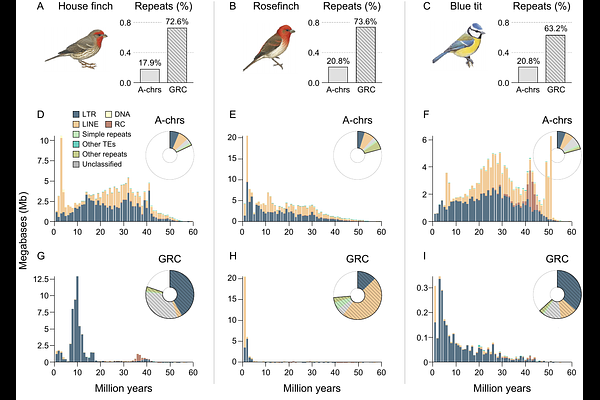Avian germline-restricted chromosomes are reservoirs for active long-terminal-repeat retroviruses

Avian germline-restricted chromosomes are reservoirs for active long-terminal-repeat retroviruses
Fang, B.; Edwards, S. V.
AbstractGermline-restricted chromosomes (GRCs) are unique to germ cells and absent from somatic cells in songbirds. However, their contents, functions, and evolutionary mechanisms remain unclear. We performed comparative genomics on long-read assembled GRCs from male House Finch (Haemorhous mexicanus), Common Rosefinch (Carpodacus erythrinus), and Blue Tit (Cyanistes caeruleus), the first two of which are newly presented and annotated here. These long-read GRCs are repeat-rich (63-74%), despite their wide variation in size (16-160 megabases), individually distinct gene content, and variable evolutionary histories. These GRCs have accumulated intact long terminal repeat (LTR) endogenous retroviruses (ERVs), and their proliferation co-occurs with speciation events of passerine birds. In contrast, normal chromosomes (autosomes and sex chromosomes) are known to purge ERVs through ectopic recombination of LTRs that generate solo LTRs. Furthermore, transcriptomic data reveal significantly higher ERV transcription on GRCs than on A-chrs in House Finch testis. We propose that GRCs act as reservoirs of active ERVs, promoting germline transposition and potentially accelerating adaptation and speciation. This study suggests that GRCs play an indispensable role and likely contribute to adaptive diversification in birds.